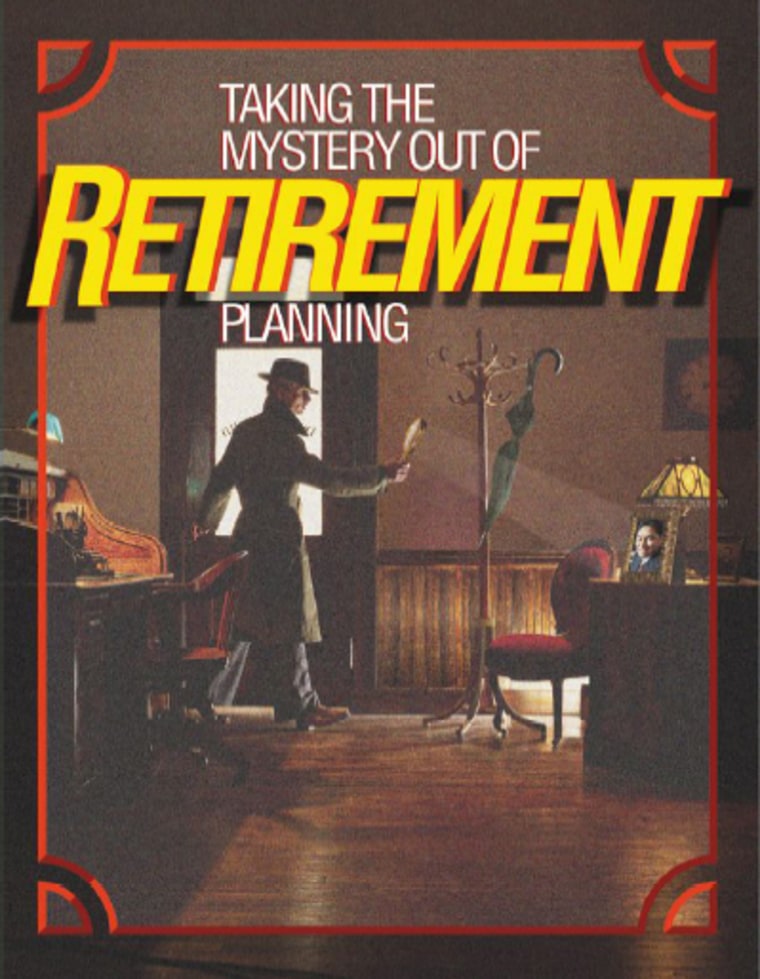For all the hand wringing over rabid consumption to the exclusion of savings, Americans may actually be better savers than their reputation and government figures indicate. Most people appear to be actually saving for retirement — just not enough.
A recent survey sponsored by financial firm AXA Equitable found nearly 85 percent of workers have started planning for retirement and are squirreling away money each month toward their golden years. But while the majority may be saving, most are saving too little to completely fund the golden retirement they are planning, let alone a silver or bronze version.
Worse, they are probably unaware their current efforts will fall far short of their goals.
The reason is twofold.
First, their rate of savings harkens back to another time, their parents' and grandparents'. This was the rather odd discovery of research conducted separately by American Association of Retired Persons and the Center for Retirement Research at Boston College. Both studies found the current rate of saving is consistent with that of previous generations.
“We were amazed at how consistent the wealth-to-income ratios have remained over time,” says Andrew Eschtruth, speaking for the Center for Retirement. “It’s almost like people are handing it down from generation to generation,” he adds. But unless an inheritance comes with it, this historical savings rate will be inadequate.
“Survey after survey finds people are underestimating what they need for a financially secure retirement,” says James Klein, president of the American Benefits Council, an advocate for employer-sponsored benefit programs. He credits this shortfall in part with increasing longevity — retirements expected to last twenty-five to thirty years versus the ten to twenty years enjoyed by previous generations. The more time spent in retirement, the more money needed to cover healthcare and living costs.
But equally important in explaining why what was good enough for granddad is not going to be good enough for future retirees is the increased responsibility they have for funding their own retirement.
“The financial risk has definitely shifted to the individual as pension plans are fast becoming a thing of the past,” says Jon Dauphine, director of economic security strategy for AARP in Washington, D.C. Also on the ‘things of yore’ list are life-long employer-paid healthcare benefits.
“People need to understand that while they will get Social Security, it is not going to be nearly enough to fund ‘the good life.’ High premiums under Medicare and the lack of protection for nursing home care means people need to either save more now, hope they can work forever, or resign themselves to being poor,” warns Dallas Salisbury, president of the Employee Benefit Research Institute (EBRI).
While the higher cost of retirement and increased responsibility for financing it explain why many future retirees risk outliving their savings if they fail to increase their savings now, there is another factor. Too few Americans take the time to do the math and figure out just how much they need to save to fund the retirement they envision for themselves.
This has led a increasingly concerned Uncle Sam to shift the public focus away from merely encouraging ‘saving’ to one of ‘save, but please do the math and save more.’
That, anyway, is the implied message of a new booklet being offered by the Department of Labor Employee Benefits Security Administration's Taking the Mystery Out of Retirement Planning. The brochure, being highlighted at a "national summit on retirement savings" sponsored by the Labor Dept. this week, is aimed at being a thorough attempt at guiding the uninitiated through the retirement planning process and the math involved in determining how much an individual needs to save.
“People are aware that it is important to save for retirement. We felt it’s equally important to provide tools to help them plan for their retirement. Making the right choices is critical to living a lifestyle of financial independence, and this booklet will help them realistically plan for their financial future,” says Ann L. Combs, assistant secretary for the Employee Benefit Security Administration.
Currently the brochure may be ordered by calling a toll-free number (1-866-444-3272). In several weeks it should also be available online in a user-friendly format — those with great reserves of patience and time may view it online at the agency's Web site by clicking from chapter to chapter.
For anyone interested in more immediate answers and a preference for having an online calculator automatically do the math for them — without their fully understanding the nuances of the calculations — many financial service firms make retirement planning toolkits available online. Bank of America, for instance, offers free public access to its very thorough, user-friendly online retirement planning software.
Two more good choices for pain-free instant-planning are the Ballpark Estimator at the EBRI-sponsored Choose to Save Campaign Web site, or the America Saves Web site, a program funded by non-profit, corporate and government agency members.
Regardless of whether one chooses to meticulously plan using a workbook and sharp pencil, go for a quick ballpark estimate, or dump the responsibility for projecting a life-spanning financial plan on a professional like a Certified Financial Planner, knowing where one is headed and how best to use available resources (current income and accumulated savings) to get there is the only way of ensuring the destination will be achieved. Everyone wants to end up living the type of retirement depicted in a Merrill Lynch ad. But having the winning lottery ticket should not be the only way that could possibly happen. Simply planning ahead now would work wonders for most savers.
